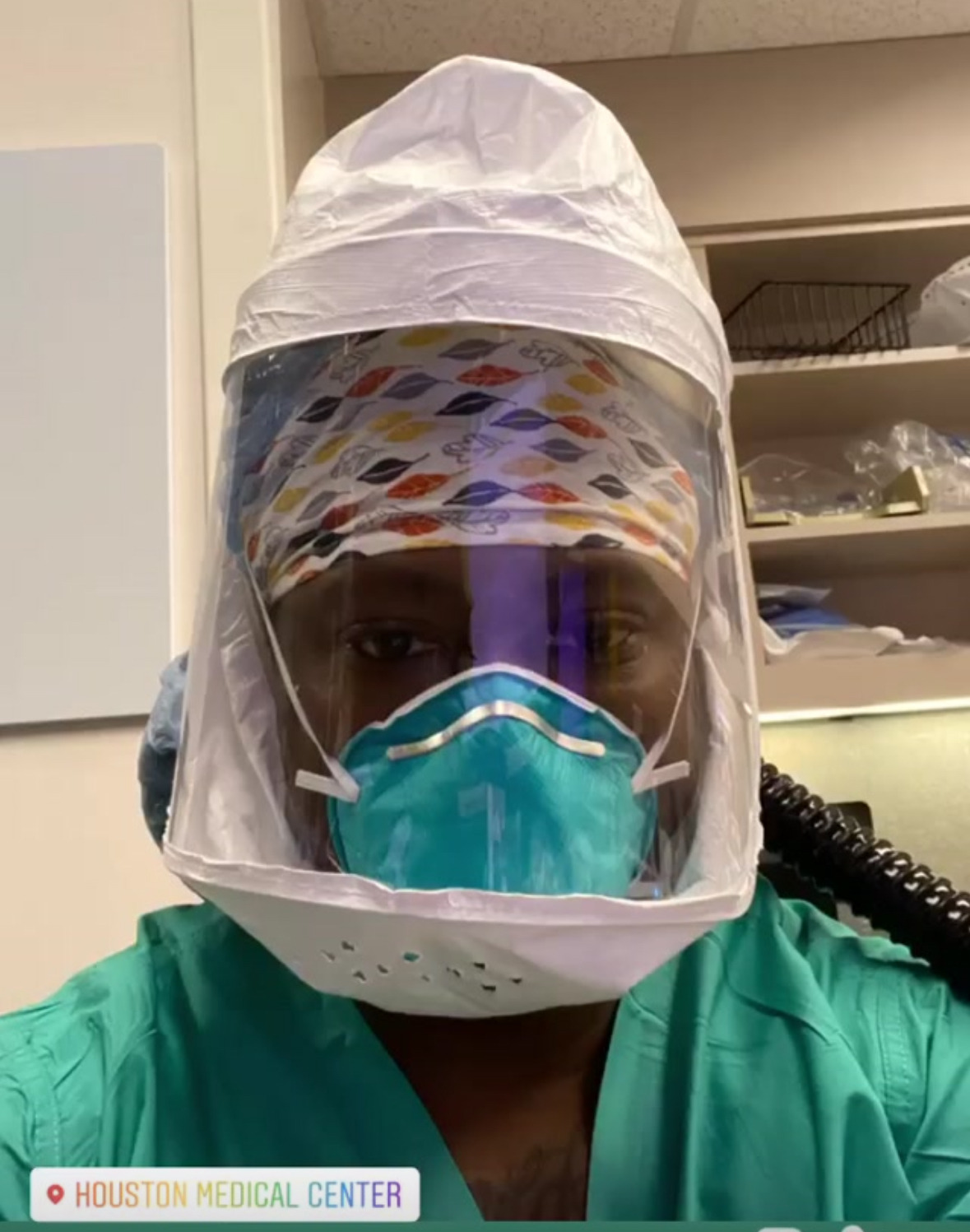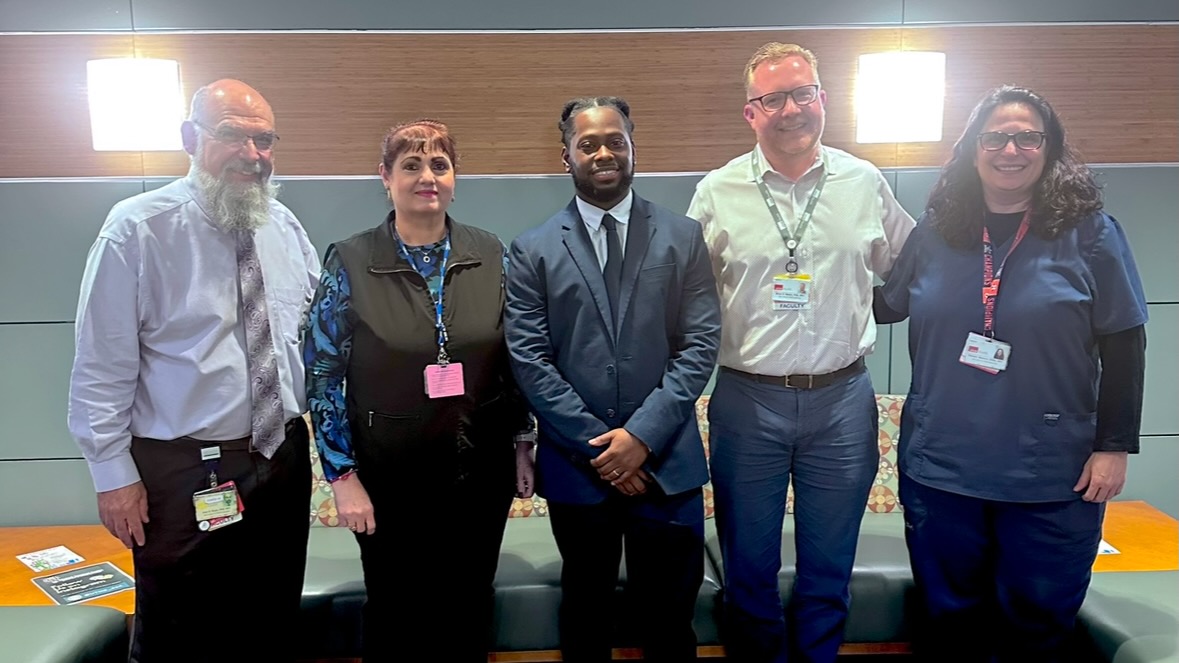When Hurricane Harvey devastated Houston in 2017, Khamron Micheals was a newly minted respiratory therapist suddenly fast-tracked to the ICU. Three years later, COVID-19 transformed those same intensive care units into isolation zones where healthcare workers donned protective gear that made them look like astronauts. Through both crises, Khamron was there, gathering firsthand experience that would reshape his career trajectory.
Today, Dr. Khamron Micheals works at the intersection of artificial intelligence and public health, developing predictive models to identify asthma risk before patients reach the hospital. His journey from Houston's emergency rooms to UT Austin's research labs demonstrates how frontline healthcare experience, combined with advanced computational tools, can transform how we approach respiratory health in underserved communities.
From Pharmacy Dreams to Respiratory Reality
Growing up in Houston with limited resources but unlimited family support, Khamron's healthcare aspirations began with a middle school visit to a classmate's home. The mansion, complete with an elevator, sparked curiosity about how people could live so differently. Learning that both parents were pharmacists who owned their practice planted a seed about what was possible through healthcare careers.
By his fourth year of undergraduate studies, however, he had yet to apply to nursing school—not due to lack of interest, but out of fear and uncertainty about the process. Doubting whether his grades were strong enough and unfamiliar with the application steps, he never took the leap. In hindsight, it was a misguided hesitation—but an honest one.
That's when UTMB's respiratory therapy program offered a conditional acceptance that would change everything. Despite having to maintain specific grades and complete additional coursework, the opportunity represented someone believing in his potential when other programs had passed him by.
Within a year of graduating, Khamron was working night shifts at Houston Methodist while simultaneously pursuing a Master of Healthcare Administration at Texas Southern University. The schedule was grueling, but the dual experience of clinical practice and healthcare systems study would prove foundational.
Hurricane Harvey and COVID-19 Shape Research Focus
Hurricane Harvey accelerated Khamron's clinical advancement in an unexpected way. The storm hit during his orientation period, forcing him into solo floor responsibilities much earlier than planned. This baptism by fire built trust with the team and led to a faster-than-usual transition into the ICU, where he managed complex cases that would typically require years more experience. But it was the COVID-19 pandemic that crystallized his research interests.

Working as one of the designated COVID respiratory therapists, Khamron witnessed the virus's devastating effects on lung function while gathering observations that traditional medical training hadn't prepared anyone for. The experience left him with a profound realization. He had access to invaluable frontline data but lacked the analytical tools to transform those observations into systematic insights that could help future patients.
This frustration drove him back to UTMB, this time for a PhD in public and population health. His dissertation would focus on COVID-19 respiratory mechanics, converting traumatic ICU experiences into data-driven research.
Envisioning Healthcare's Digital Transformation Before the AI Boom
While many discovered artificial intelligence through recent chatbot developments, Khamron had been contemplating AI's healthcare applications since 2017. Working hospital night shifts, he watched telehealth expand and envisioned something more ambitious. He imagined wearable devices that could track not just vital signs but social determinants of health like food access, air quality, and neighborhood stressors.
His MHA studies at Texas Southern University had introduced him to concepts like food deserts and social determinants of health, revealing that health disparities stemmed from complex interactions of factors beyond individual behavior or genetics. This understanding would shape his approach to both clinical practice and research.
"I didn't know the term 'large language model' back then," he reflects. "I just knew that the future of healthcare had to be smarter than what I was seeing."
The PhD Journey: Financial Sacrifice for Research Skills
The transition from clinical practice to PhD research required significant adjustments, both intellectual and financial. Initially planning to focus on AI applications for COPD, the pandemic redirected his research toward COVID-19. The shift made sense—he had unique access to real-world data and observations from the frontlines.
The PhD journey proved humbling, requiring dependence on family support and his wife's engineering career to maintain financial stability. However, the experience gave him something essential for his future work. He gained the tools and expertise to ask better questions about the patterns he'd observed in practice.
Now, as a postdoctoral fellow at UT Austin's Dell Medical School, Khamron works on projects that exemplify his evolution. One examines whether traditional race-based lung function equations might misclassify disease in minoritized populations. Another leverages cloud computing to aggregate massive datasets, creating AI models that account for neighborhood-level factors affecting respiratory health.
Strategic Mentorship Creates Opportunities to Lead
Khamron's trajectory reflects the compound effect of strategic mentorship. Dr. Brian Walsh allowed him to teach statistics and research methods courses, the very subjects that had once challenged him as a student. Dr. José Rojas guided his dissertation work, bridging clinical expertise with research rigor. Dr. Carole Tucker connected him with the AIM-AHEAD fellowship that opened new possibilities in AI research.

This mentorship network provided opportunities while modeling how to pay knowledge forward. Today, as an affiliate professor at Boise State University and board member of the American College for Respiratory Therapy Education, Khamron ensures other first-generation students receive similar support.
"I'm not self-made, I'm community-made," he emphasizes, acknowledging how each opportunity came through someone recognizing potential and opening doors.
Scaling Impact Through Population-Level Research
The shift from treating individual patients to conducting population-level research required sacrificing the immediate gratification of bedside care for potential long-term impact. As a respiratory therapist, the results were visible each shift. In research, years might pass before findings translate into practice—but when they do, they can affect thousands.
His current work through the NIH-funded AIM-AHEAD consortium pairs him with computer engineers to develop machine learning models for predicting asthma diagnoses. By analyzing patterns invisible to human observation, these tools could enable earlier interventions and more personalized treatment approaches.
The statistics that once intimidated him now serve as essential tools. Teaching these methods to the next generation of respiratory therapists, he emphasizes their power to reveal truths about healthcare disparities and system failures that anecdotal observations alone cannot capture.
Personal Milestones Reflect Promises Kept
When his mother saw his photo featured on UTMB's School of Public and Population Health website, her emotional response reminded Khamron why he pursues this work. The image held significance beyond academic achievement, symbolizing promises kept and sacrifices honored across generations.
Looking ahead, success means continuing to blend respiratory therapy expertise with AI development to advance health equity. He envisions predictive models that consider ZIP codes alongside genetic factors, treatment protocols that account for food access as much as medication adherence, and healthcare systems that prevent suffering rather than simply managing it.
For those considering following a similar path, Khamron offers pointed advice: "Do you have a question?" Without a driving curiosity about something that matters deeply, the PhD journey's challenges—financial strain, intellectual rigor, years of delayed gratification—become insurmountable. But with genuine purpose, those same challenges become stepping stones toward meaningful impact.
Bridging Clinical Experience with Computational Innovation
Dr. Khamron Micheals represents a new generation of healthcare researchers who combine frontline clinical experience with advanced computational tools. His work demonstrates that improving American healthcare—which despite leading global spending ranks poorly in outcomes—requires professionals who understand both individual patient needs and population-level patterns.
Khamron's evolution illustrates how personal experience with healthcare's failures can drive systemic solutions. His journey from Houston's night shift ICUs to Austin's research labs proves that sometimes the most important developments come from those who've witnessed problems firsthand and possess both the tools and determination to address them at scale.
As he continues developing AI applications for respiratory health while training the next generation of clinician-researchers, Dr. Micheals embodies the bridge between what healthcare is and what it could become—smarter, fairer, and more responsive to the communities that need it most.
